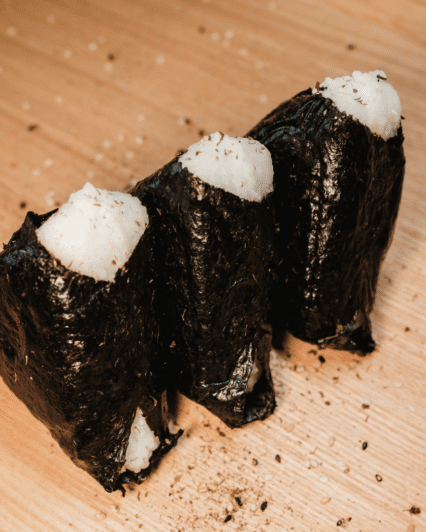A Guide to Different Types of Soy Sauce

A Guide to Different Types of Soy Sauce
Soy sauce is everywhere in Asian cooking across tons of cuisines. Originally created in China thousands of years ago, it’s spread throughout the continent and evolved into many different varieties.
Because there are so many different types of soy sauce (they’re not interchangeable), using sweet soy sauce in place of Chinese light soy sauce, and vice versa, would have a disappointing result. Knowing the basics of these varieties can help you be sure you’re using a type that best complements your dish.
There are many qualities that distinguish different soy sauces. Today, we’ll focus on six varieties: light, dark, tamari, double fermented, seasoned, and sweet sauce.
Light
If you’re following a Chinese recipe and it calls for soy sauce, generally you can assume it’s referring to light soy sauce unless specified otherwise.
While there are Chinese light soy sauces and Japanese light soy sauces (usukuchi shoyu), it’s in Chinese cooking where this style is the “default.” Chinese light soy sauce is thinner than its dark counterpart and — although it contains less sodium — has a saltier flavor. Otherwise, the actual soy flavor isn’t as strong. It still shows up in Japanese dishes, but it’s not ubiquitous like in Chinese cuisines.
In Japanese cuisine, light soy sauce is meant to be used for cooking and seasoning versus dipping. Japanese light soy sauce should not be confused with low sodium soy sauce as it is saltier than Japanese dark soy sauce (koikuchi shoyu).
Dark
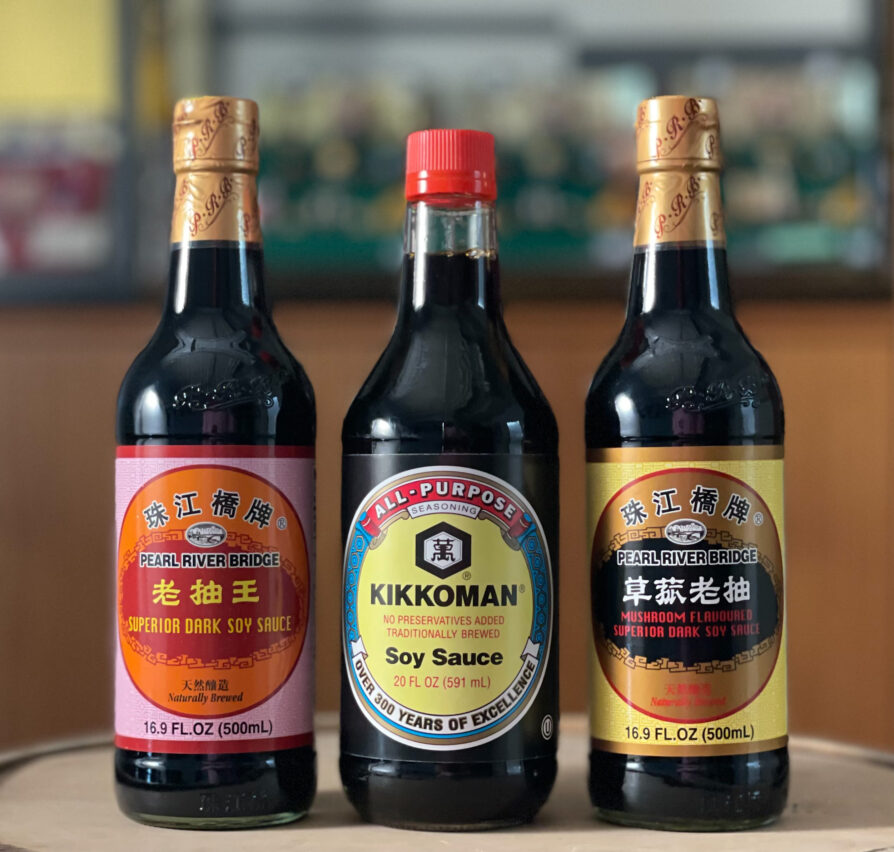
The exact characteristics of dark soy sauce can vary somewhat depending on if it’s Japanese or Chinese alongside other brewing factors, but overall, it tastes a bit less salty yet with a rounder, stronger soy flavor.
While light soy sauce is the “default” in a Chinese dish, the opposite is true in Japanese cooking, where dark soy sauce (koikuchi shoyu) is more common. If a Japanese recipe calls for soy sauce, you can usually assume it’s referring to dark sauce. Koikuchi shoyu is an all-purpose soy sauce used in cooking, marinades and sauces.
Chinese dark soy sauce ironically has a less salty taste but actually has more sodium than Chinese light soy sauce. It is typically thicker and sweeter as it has more sugar and concentrated soybean flavor. It is often used to darken the color of dishes and sauces.
The stronger flavor means you do have to be a bit more careful with dark soy sauce; accidentally adding too much could overpower other ingredients in a dish.
Tamari
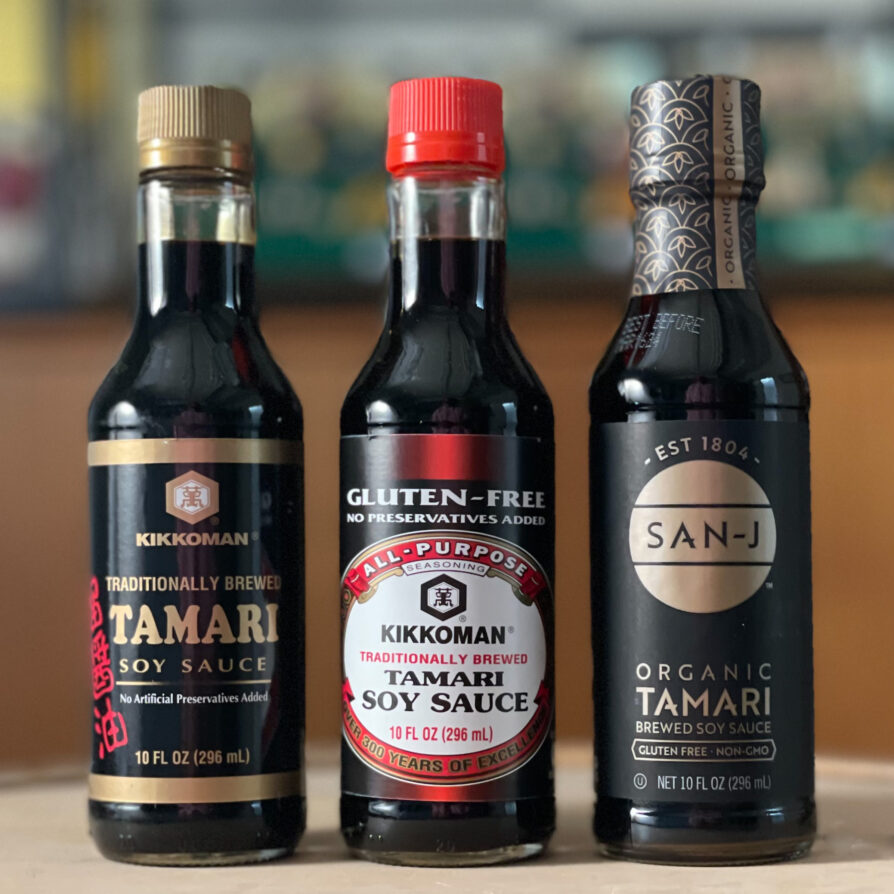
Tamari has become better known to Western cooks recently as a gluten free alternative to standard soy sauce. Despite this, that’s neither a completely accurate nor comprehensive description.
For starters, tamari is often gluten free but not always — so someone with Celiac shouldn’t just grab any bottle of tamari without checking the ingredients first. The reason for this is that the production process for tamari includes either no wheat or very little wheat, giving it no or low gluten. In fact, tamari is a byproduct of the miso production process.
The other reason why it’s not entirely accurate to just call tamari a gluten-free version of soy sauce comes back to that production process.
That is, because tamari is more purely soy, the flavor reflects that; it tastes more soy-y and generally stronger than other soy sauce varieties. Because of this, it can work as a substitute for other soy sauce varieties if you have Celiac, but otherwise because of its greater pungency it isn’t a perfect one-to-one substitute.
Because of its strong taste, tamari is commonly used in dipping sauces, marinades, and other settings where the powerful flavor can complement other ingredients without overwhelming them.
Double fermented
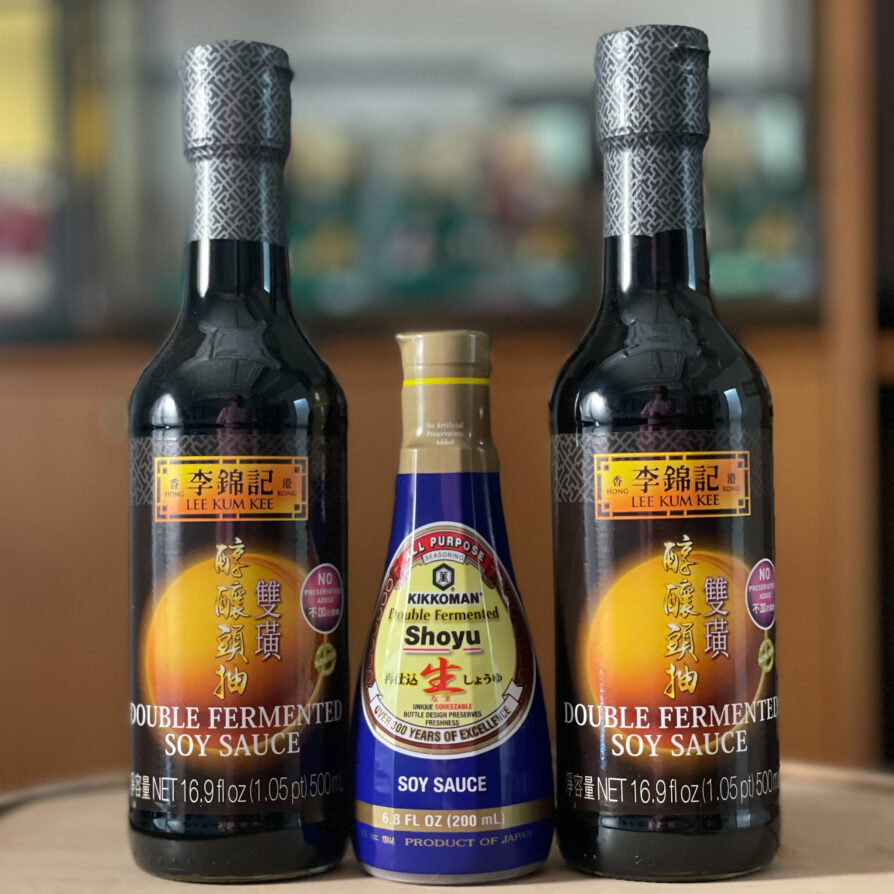
As the name would suggest, double fermented soy sauce is fermented twice!
During the standard soy sauce production process, the initial liquid is fermented alongside a salt brine; for double fermented soy sauce, this is done alongside more soy and wheat instead.
The result is a flavor that’s even stronger and more umami forward than other soy sauce. As a richer taste, double fermented soy sauce is common for dipping sauces and stir fries where it can provide a bright splash of flavor or impart an underlying taste without overpowering the dish.
Seasoned
Based on the name, you’d be correct to assume that seasoned soy sauce is, well, seasoned. This variety is generally a Chinese light soy sauce base, plus MSG (or another flavor enhancer) alongside a bit of sugar.
Because of its slightly sweet, relatively light flavor, it’s often used for seafood, whose mild pleasant flavors are accented well by it. In fact, it will sometimes be labeled as “for seafood.” Along with that usage, it’s also used to flavor soups and other sauces.
While the name could make it sound like it tastes quite different, it can in many cases be used in place of light soy sauce. That said, because of its added ingredients, it should be added to a dish near the end of the cooking process so as not to overcook it.
Sweet
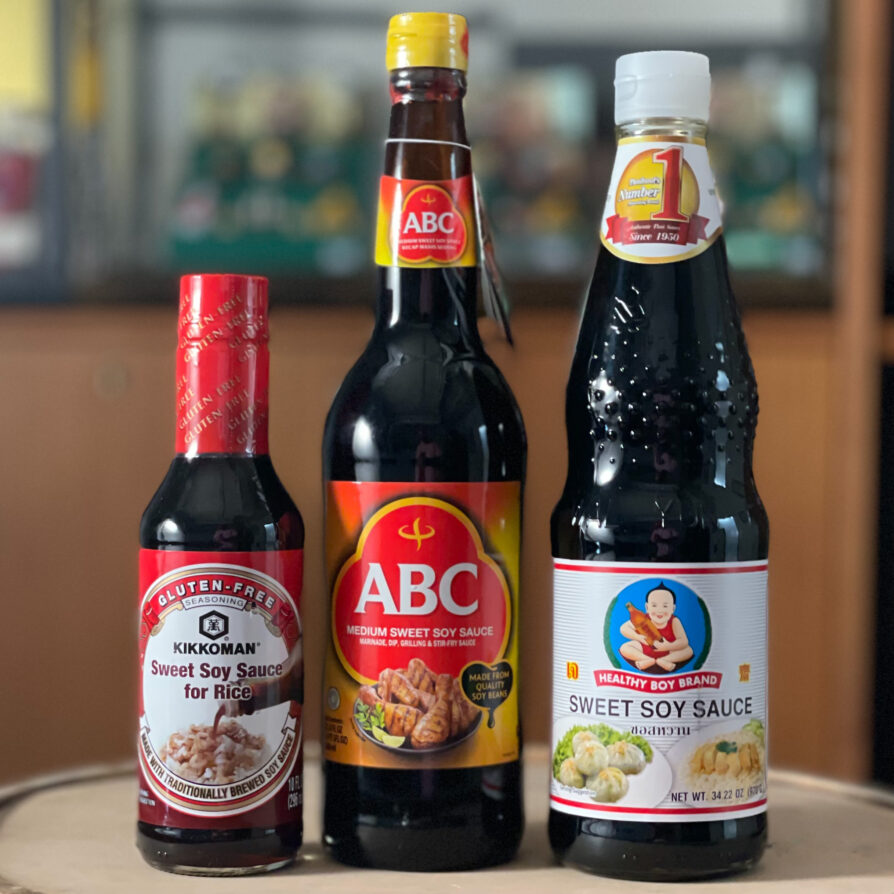
Lastly is sweet soy sauce, which almost goes beyond just being a soy sauce and becomes its own thing that simply has a soy sauce base.
The most well-known sweet soy sauce is kecap manis, the sweet sauce that’s ubiquitous across Indonesian cuisine. This sauce is flavored with sugar and other ingredients that can include anise, pepper, clove, cinnamon, and others. The result is a sauce that’s much more viscous than other soy sauces — it’s thick, sticky, and has an almost molasses-y flavor. Out of the corner of your eye, you might mistake it for oyster or hoisin sauce.
You’re most likely to come across sweet soy sauce in Indonesian cooking, where it’s the most common soy sauce by far. If cooking with it yourself, you’ll quickly discover how delicious it is.
These types of soy sauce all have their own quirks and qualities — and within them, there are even more varieties. What do they have in common? Well, they’re all the backbone of some of our favorite dishes.



